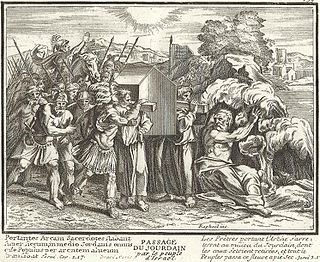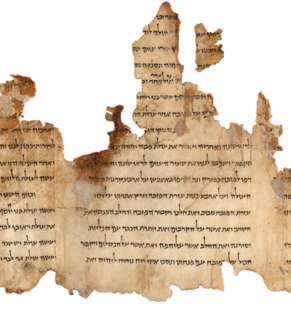The Jubilee is the year at the end of seven cycles of shmita, and according to Biblical regulations had a special impact on the ownership and management of land in the Land of Israel; there is some debate whether it was the 49th year, or whether it was the following (50th) year. Jubilee deals largely with land, property, and property rights. According to Leviticus, slaves and prisoners would be freed, debts would be forgiven, and the mercies of God would be particularly manifest. Leviticus 25:8-13 states:
You shall count off seven Sabbaths of years, seven times seven years; and there shall be to you the days of seven Sabbaths of years, even forty-nine years. Then you shall sound the loud trumpet on the tenth day of the seventh month. On the Day of Atonement you shall sound the trumpet throughout all your land. You shall make the fiftieth year holy, and proclaim liberty throughout the land to all its inhabitants. It shall be a jubilee to you; and each of you shall return to his own property, and each of you shall return to his family. That fiftieth year shall be a jubilee to you. In it you shall not sow, neither reap that which grows of itself, nor gather from the undressed vines. For it is a jubilee; it shall be holy to you. You shall eat of its increase out of the field. In this Year of Jubilee each of you shall return to his property. (WEB)

The Jerusalem Talmud, also known as the Palestinian Talmud or Talmuda de-Eretz Yisrael, is a collection of Rabbinic notes on the second-century Jewish oral tradition known as the Mishnah. Naming this version of the Talmud after the Land of Israel rather than Jerusalem is considered more accurate by some because, while the work was certainly composed in "the West", i.e. in the Holy Land, it mainly originates from the Galilee rather than from Jerusalem in Judea, as no Jews lived in Jerusalem at this time. The Jerusalem Talmud was compiled in the Land of Israel, then divided between the Byzantine provinces of Palaestina Prima and Palaestina Secunda, and was brought to an end sometime around 400. The Jerusalem Talmud predates its counterpart, the Babylonian Talmud, by about 200 years, and is written in both Hebrew and Jewish Palestinian Aramaic.
Kodashim is the fifth of the six orders, or major divisions, of the Mishnah, Tosefta and the Talmud, and deals largely with the services within the Temple in Jerusalem, its maintenance and design, the korbanot, or sacrificial offerings that were offered there, and other subjects related to these topics, as well as, notably, the topic of kosher slaughter of animals for non-sacrificial purposes.
The sabbath year also called the sabbatical year or shǝvi'it is the seventh year of the seven-year agricultural cycle mandated by the Torah for the Land of Israel, and still observed in contemporary Judaism.
Pe'ah is the second tractate of Seder Zeraim of the Mishnah and of the Talmud. This tractate begins the discussion of topics related to agriculture, the main focus of this seder (order) of the Mishnah. The tractate discusses the laws of gifts to the poor when a person harvests their field, vineyards or trees, based on commandments in the Torah. The tractate also deals with the laws of giving charity in general. The tractate is called Pe'ah because the first part of the tractate deals with the laws of Pe'ah, while the remaining part of the tractate deals with a number of other related topics.
Demai (Hebrew: דְּמַאי, meaning "agricultural produce about which there is a doubt whether it has been properly tithed" is the third tractate of Seder Zeraim of the Mishnah and of the Talmud. It deals with the Jewish legal concept of demai, doubtfully tithed produce, and concerns the laws related to agricultural produce about which it is suspected that certain obligatory tithes have not been properly separated in accordance with requirements specified in the Torah. The tithes in question are ma'aser rishon, terumath ma'aser, and ma'aser sheni or ma'aser ani, depending on the year of the Sabbatical year cycle.
Ma'aserot is the seventh tractate of Seder Zeraim of the Mishnah, Tosefta, and the Jerusalem Talmud. It discusses the types of produce liable for tithing as well as the circumstances and timing under which produce becomes obligated for tithing. In Biblical times, during each of the six years of the cycle, "Maaser Rishon" was given to Levites as 10% of an individual's crop. "Maaser Sheni" was separated in the first, second, fourth and fifth year and is 10% of the crop remaining after "Maaser Rishon". It was brought to Jerusalem to be eaten there or was redeemed upon coins which were deconsecrated upon food in Jerusalem. The final category is "Maaser Ani" that is given to the poor in the third and sixth years.
Kil'ayim is the fourth tractate of Seder Zeraim of the Mishnah, dealing with several biblical prohibitions of mixed species, namely, planting certain mixtures of seeds, grafting different species of trees together, growing plants other than grapevines in vineyards, crossbreeding animals, working a team of different kinds of animals together, and mixing wool and linen in garments.

The tithe is specifically mentioned in the Books of Leviticus, Numbers and Deuteronomy. The tithe system was organized in a seven-year cycle, the seventh-year corresponding to the Shemittah-cycle in which year tithes were broken-off, and in every third and sixth-year of this cycle the Second tithe replaced with the Poor man's tithe. These tithes were in reality more like taxes for the people of Israel and were mandatory, not optional giving. This tithe was distributed locally "within thy gates" to support the Levites and assist the poor. Every year, Bikkurim, Terumah, Ma'aser Rishon and Terumat Ma'aser were separated from the grain, wine and oil. Initially, the commandment to separate tithes from one's produce only applied when the entire nation of Israel had settled in the Land of Israel. The Returnees from the Babylonian exile who had resettled the country were a Jewish minority, and who, although they were not obligated to tithe their produce, put themselves under a voluntary bind to do so, and which practice became obligatory upon all.

Sabbath is a day set aside for rest and worship. According to the Book of Exodus the Sabbath is a day of rest on the seventh day, commanded by God to be kept as a holy day of rest, as God rested from creation. It is observed differently among the Abrahamic religions and informs a similar occasion in several other practices. Although many viewpoints and definitions have arisen over the millennia, most originate in the same textual tradition of: "Remember the sabbath day, to keep it holy".
The Prozbul was established in the waning years of the Second Temple of Jerusalem by Hillel the Elder. The writ, issued historically by rabbis, technically changed the status of individual private loans into the public administration, allowing the poor to receive interest-free loans before the Sabbatical year while protecting the investments of the lenders.

Biblical Sabbath is a weekly day of rest or time of worship given in the Bible as the seventh day. It is observed differently in Judaism and Christianity and informs a similar occasion in several other faiths. Though many viewpoints and definitions have arisen over the millennia, most originate in the same textual tradition of "Remember the sabbath day, to keep it holy".
In the Jewish classical texts, Atchalta De'Geulah is the period of time in which a new stage of revival in the process of the redemption and the coming of the Jewish Messiah. Hence, a pivotal point in time, since it is the initial stage of the salvation process that constitutes a different period in time, in many senses, and especially different from all previous periods. It is the core idea of the Religious Zionism movement.

Sefer HaTemunah is a 13–14th century kabbalistic text. It is quoted in many Halakhic sources.

Tu BiShvat is a Jewish holiday occurring on the 15th day of the Hebrew month of Shevat. It is also called "Rosh HaShanah La'Ilanot", literally "New Year of the Trees." In contemporary Israel, the day is celebrated as an ecological awareness day, and trees are planted in celebration.
Judah b. Hiyya was a Jewish Amora sage of the Land of Israel, during the transitional period between the Tannaic and Amoraic eras. He was the son of R. Hiyya and his wife Judith, and the twin brother of Hezekiah.
Rav Giddel was a second generation Amora sage of Babylon and the Land of Israel. Abba Arika ("Rav") was his Teacher par excellence. Dozens of times he delivers Abba Arika's work in the Talmud - which many of them he heard indirectly from his teacher Hiyya b. Joseph, and in rare occasions he also delivers the work of R. Ze'iri.

Yom HaAliyah is an Israeli national holiday celebrated annually according to the Jewish calendar on the tenth of the Hebrew month of Nisan and also observed in schools on the seventh of the Hebrew month of Cheshvan, to commemorate the historic events of the Jewish People entering the Land of Israel as written in the Bible, which happened on the tenth of the Hebrew month of Nisan. The holiday was established to acknowledge Aliyah, immigration to the Jewish state, as a core value of the State of Israel, and honor the ongoing contributions of Olim to Israeli society.







